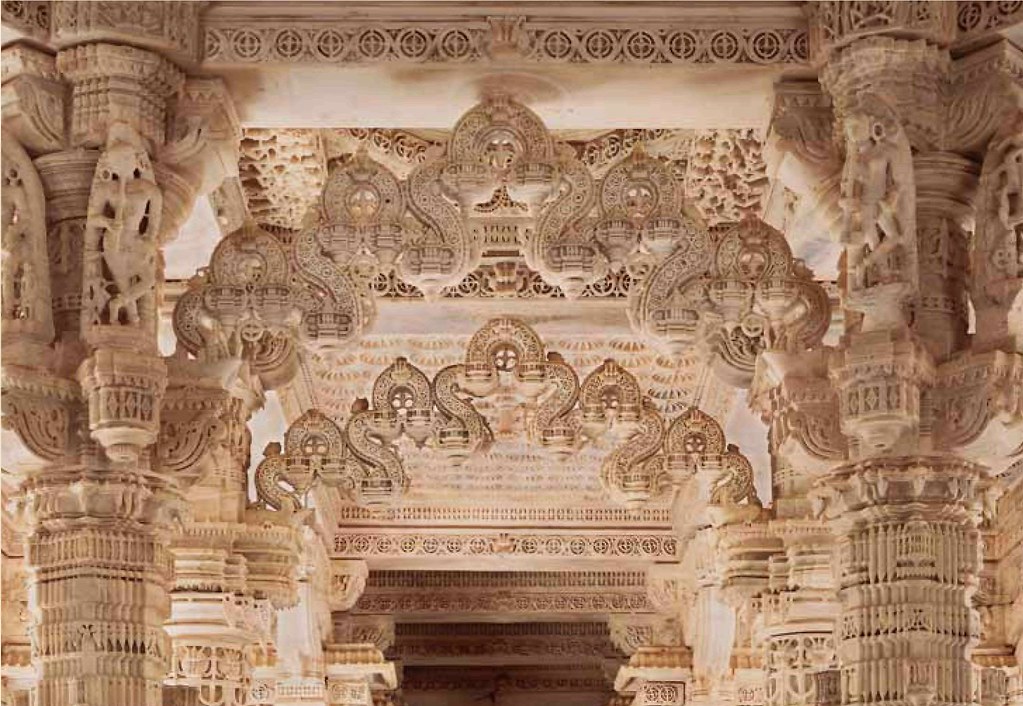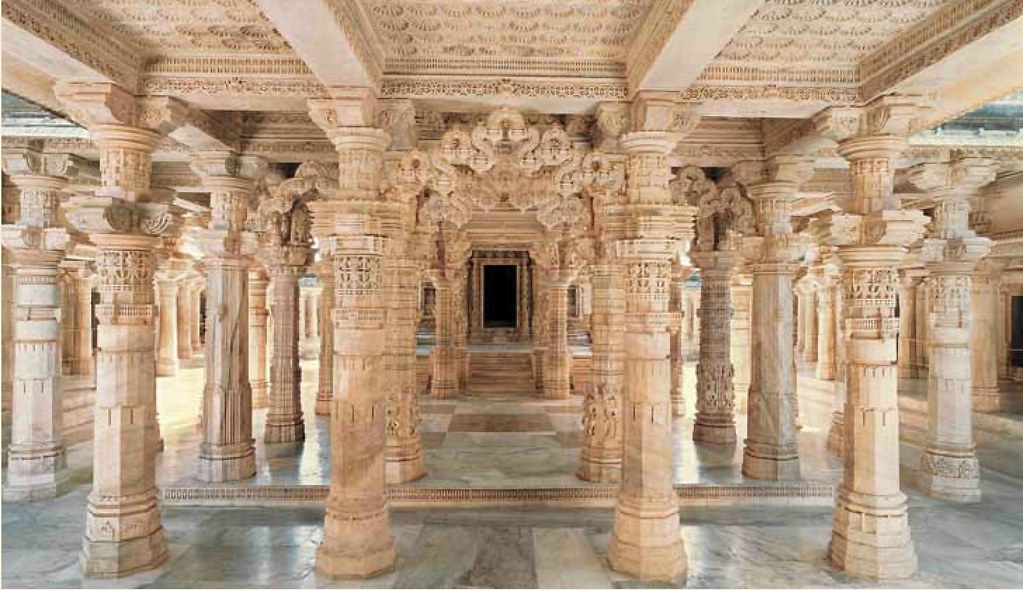 Toranas in Luna Vasahi / Tejapala Temple
Toranas in Luna Vasahi / Tejapala TempleThe Vimala Vasahi or Vimala Shah Temple
At the beginning of the second millennium, the Solanki dynasty of Gujarat ruled over the west coast of northern India. The Parmars of Mt. Abu were the tribute paying vassals of the Solankis. One of the Solanki ministers, Vimala Shah, an underling of King Bhimdeo (or Bhima Deva), was dispatched to the city of Chandravati to quell the rebellion in a princely state. At the end of his mission, he asked a Jain monk how he could atone for the bloodshed. The monk informed him that wilful killing could not be atoned. However, he could earn good virtue by constructing a temple at Mt. Abu.
Legend has it that the Brahmans were made to part with the land on which the Vimala Vasahi Temple stands. Vimala Shah’s tutelary goddess was Ambika, who appeared to him in a dream and showed him the place where an ancient Adinatha statue lay buried. This he placed before the Brahmans as evidence that the Jains had also been worshipping there since ancient times. Even then, the Hindus relinquished possession of the property only after a fantastic sum paid for it: Vimala Shah had to cover the 1,204 square meter area in pieces of gold, which is supposed to have cost him forty-six million rupees.
The Vimala Shah temple construction started in 1031 AD. The shrine masons’ guild of Badnagar in Gujarat was responsible for drawing up the plan; their architect, Kirthidhar, took fourteen years to complete this marvel with the help of twelve hundred labourers and fifteen hundred stonemasons. The marble was brought from the Arasoori hills near Ambaji. It was transported on the backs of elephants over a distance of approximately thirty to forty kilometres. It is said, that one hundred and eighty million rupees have been spent on the construction of the temple, including the price for the land.
 View of the Luna Vasahi / Tejapala Temple
View of the Luna Vasahi / Tejapala Temple